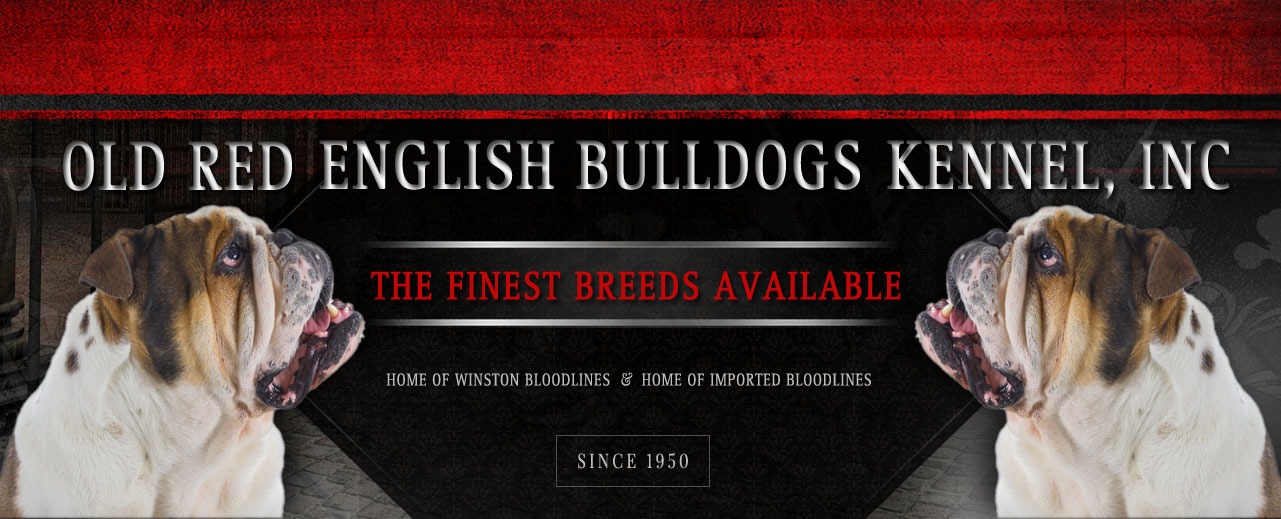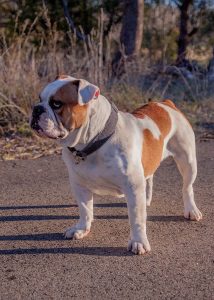The Australian Bulldog is a newly developed breed originating from Australia. It was initially created by two families who aimed to develop an improved version of the English Bulldog that was healthier and possessed increased working abilities. To achieve this, English Bulldogs were crossed with Boxers, Bullmastiffs, mixed-breed dogs, and American Bulldogs. The breed gained significant popularity in the late 1990s after being featured on ABC’s Pet Show, which led to an increase in breeders and enthusiasts.
Although the Australian Bulldog has not yet been formally recognized by major canine organizations, breed clubs are working towards gaining recognition with the Australian National Kennel Council (ANKC). The breed is also known as the Aussie Bulldog, Australian Bosdog, and Australasian Bosdog.
Country of Origin: Australia
Size:
Large 35-55 lb
X-Large 55-90 lb
LifeSpan:
10 to 12 Years
Trainability:
Moderate Effort Required
Energy Level:
Medium Energy
Grooming:
Brushing Once a Week or Less
Protective Ability:
Good Watchdog
Hypoallergenic Breed:
No
Space Requirements:
House with Yard
Compatibility With Other Pets:
Generally Good With Other Pets If Raised Together
May Have Issues With Other Dogs
May Have Problems With Non-Canine Pets
Not Recommended For Homes With Small Animals
Litter Size:
3-6 puppies
Names:
Aussie Bulldog, Australian Bosdog, and Australasian Bosdog
HEIGHT/WEIGHT
Males:
60-85 lbs, 17-21 inches
Females:
50-70 lbs, 17-20 inches
HISTORY:
The Australian Bulldog is a newly developed breed that originated in Australia, with its history tracing back to the Old English Bulldog, a breed with a long history in England. The Old English Bulldog was very different from its modern descendant, the English Bulldog. Developed from ancient bull-catching Mastiffs, the Old English Bulldog was bred to participate in bull-baiting, a sport in which a bull was tethered to a stake and provoked, while the Bulldog would attempt to immobilize it by biting its nose. This event often lasted for over an hour and sometimes resulted in the death of one or both animals. To perform this task, the Old English Bulldog was an incredibly powerful and athletic animal, known for its wide jaws to maximize its bite. Bull-baiting remained a popular sport in England until it was banned by Parliament in 1835. Afterward, Old English Bulldogs were crossbred with Terriers to create Bull and Terriers, used in the newly popular sport of dog fighting.
As the breed’s working purpose faded, Bulldog fanciers worked to transform the Old English Bulldog from a working dog to a companion animal and show dog. By the end of the 19th century, the Old English Bulldog had transformed so much that it was considered a different breed altogether, shorter and stockier with an exaggerated face and more docile temperament. However, it had lost its athleticism, and its working drive had almost disappeared. Despite this, the Old English Bulldog’s legacy continued, contributing to the development of several breeds, including the Bullmastiff, Bull Terrier, Staffordshire Bull Terrier, American Pit Bull Terrier, American Bulldog, and Boxer.
The English Bulldog became increasingly popular in homes and show rings, particularly in English-speaking countries. However, in recent years, the breed has faced criticism due to its numerous health issues. Many English Bulldogs are unable to give birth naturally, requiring cesarean sections, and they suffer from numerous skeletal, respiratory, and skin problems. Their unique facial structure also causes breathing difficulties, making them prone to snoring, flatulence, and heat intolerance.
In Australia, wild pigs became a major agricultural pest. These feral pigs, known as razorbacks, are fast, highly intelligent, and fiercely protective, posing significant threats to crops and property. Specially bred dogs were needed for hunting these pigs. Australian pig-hunting dogs are typically descendants of the Old English Bulldog, including Boxers, Bull Terriers, Staffordshire Terriers, and American Pit Bull Terriers. However, due to breed restrictions, some dogs in Australia are misidentified as Staffordshire Terriers.
In the early 1990s, Queensland resident Pip Nobes began experimenting with breeding a healthier version of the English Bulldog by crossing it with a pig-hunting dog. After observing the health problems plaguing the English Bulldog breed, she realized that crossing them with more robust, healthy dogs could lead to a healthier companion dog. Nobes developed a line of dogs that eventually became known as the Australian Bulldog. In addition, Noel and Tina Green began a similar breeding program with their working pig-catching dogs, resulting in the establishment of the Jag Kennel.
In the 1990s, Nobes and the Greens began collaborating to develop a breed with excellent temperament, health, and athletic ability. Their goal was to create a dog suitable as a companion, with greater health than the English Bulldog. They began calling their dogs Aussie Bulldogs, and their work resulted in a national interest when the breed was featured on a popular television program, Burke’s Backyard, in 1998. The program’s exposure led to increased interest, and many breeders began developing their lines.
In 2003, a group of breeders led by Pip Nobes and the Greens founded the United Aussie Bulldog Association (UABA), and later in 2004, Nobes established the Australian Bulldog Society (ABS). Their goal was to eventually gain recognition from the Australian National Kennel Council (ANKC). The breed continued to gain popularity, but to be recognized by the ANKC, it needed to meet specific criteria and conform to the breed’s ideals.
In 2011, the ABS officially adopted the breed’s new name, the Australasian Bosdog, to comply with the ANKC rules. However, the name Australian Bulldog continues to be used interchangeably. Although the breed is still working towards full recognition by the ANKC, it is widely recognized across Australia as a purebred dog. It is also gaining recognition in other countries, although it is still rare outside of Australia.
APPEARANCE:
The Australian Bulldog has been bred exclusively as a family companion animal. Breed developers selected dogs with the best temperaments around both adults and children. The Australian Bulldog forms strong bonds with its family and wants nothing more than to be with them. This breed is not a one-person dog; it forms close attachments to all family members. Properly socialized Australian Bulldogs are typically great with children. They are not only tolerant of roughhousing, loud noises, and jerky movements from children, but are also playful and affectionate with them.
When properly socialized, Australian Bulldogs tend to be very tolerant of strangers. Most are friendly toward new people, considering them potential playmates or sources of treats and affection. While the breed is alert and somewhat territorial, many Australian Bulldogs make capable, though not excellent, watchdogs. Their appearance alone may deter intruders, but they are more likely to follow a robber home than to attack.
Australian Bulldogs generally interact well with other dogs, exhibiting low levels of dog aggression. Many enjoy sharing their lives with multiple other dogs, regardless of sex. However, they will not tolerate aggression from other dogs and will stand their ground if confronted. Some breed members may develop territorial issues with unfamiliar dogs, especially unneutered males. Australian Bulldogs typically have low prey drives and an accepting attitude toward non-canine animals. Like any breed, those not exposed to other animals may chase them, but with proper socialization, most will coexist peacefully with other pets.
The Australian Bulldog is eager to please and tends to be less stubborn than many related breeds. As a result, training is generally straightforward, especially if started at a young age. While Australian Bulldogs may not immediately obey every command, they are usually quick learners when it comes to manners, basic obedience, and even a few tricks. However, they are not likely to excel in advanced obedience training, so those seeking a dog for competitive obedience might want to consider another breed.
Surprisingly athletic and physically capable, Australian Bulldogs enjoy physical activity. They are fond of taking long walks, playing catch, or having off-leash fun in a secure area. Like all breeds, Australian Bulldogs need exercise and mental stimulation to avoid behavioral problems such as destructiveness. They do not require excessive exercise, and a typical family with a regular commitment can easily meet their needs. The Australian Bulldog is adaptable to its family’s activity level, making it an ideal companion for those who can provide weekend vigorous exercise but only have time for a daily walk during the week.
Thanks to their physical differences from the English Bulldog, the Australian Bulldog has a more functional respiratory system and is generally less messy. This makes the Australian Bulldog a cleaner eater and drinker, and it is less prone to drooling, snorting, snoring, and flatulence. That said, they are not the ideal breed for those who are overly fastidious or easily embarrassed. They may still trail food and water from their bowls, drool, make unusual sounds, snore loudly for hours, and pass gas frequently.
GROOMING REQUIREMENTS:
These are the Bulldogs and Mastiffs we breed and sell.
The pictures on each page are for identification purposes and OldBulldogs.com does not own every animal pictured. These pages are informational and intended to describe the standards of each breed.
- Alano Español
- Alapaha Blue Blood Bulldogs
- American Bandogge Mastiffs
- American Bully-Bullies
- American Pit Bull Terriers
- American Staffordshire Bullies
- American Staffordshire Terriers
- Arkansas Giant Bulldogs
- Australian Bandogge Mastiffs
- Australian Bulldogs
- American Bulldogs-Old Time Southern Bulldogs-Old Southern Whites
- Banter Bulldogs
- Boxer Bulldogs
- Bull Terriers
- Bull Mastiffs
- Miniature Bull Terriers
- Mexican Bulldogs
- Miniature English Bulldogs
- Neapolitan Mastiffs
- Old Boston Bulldogs
- Olde English Bulldogges
- Old Victorian Bulldogs
- Patterdale Terrier
- Perro de Presa Canario
- Performance-Standard Type American Bulldogs
- Perro de Presa Mallorquin
- Panja Mastiffs
- Renascence Bulldogs
- South African Boerboel
- Staffordshire Bull Terriers
- Saint Bernard
- Valley Bulldogs
- Winston Working Bulldogs
- Winston’s Working Mastiffs
- Winston’s Working Terriers
- Winston’s Working Hounds
- Winston’s Working Shepherds

